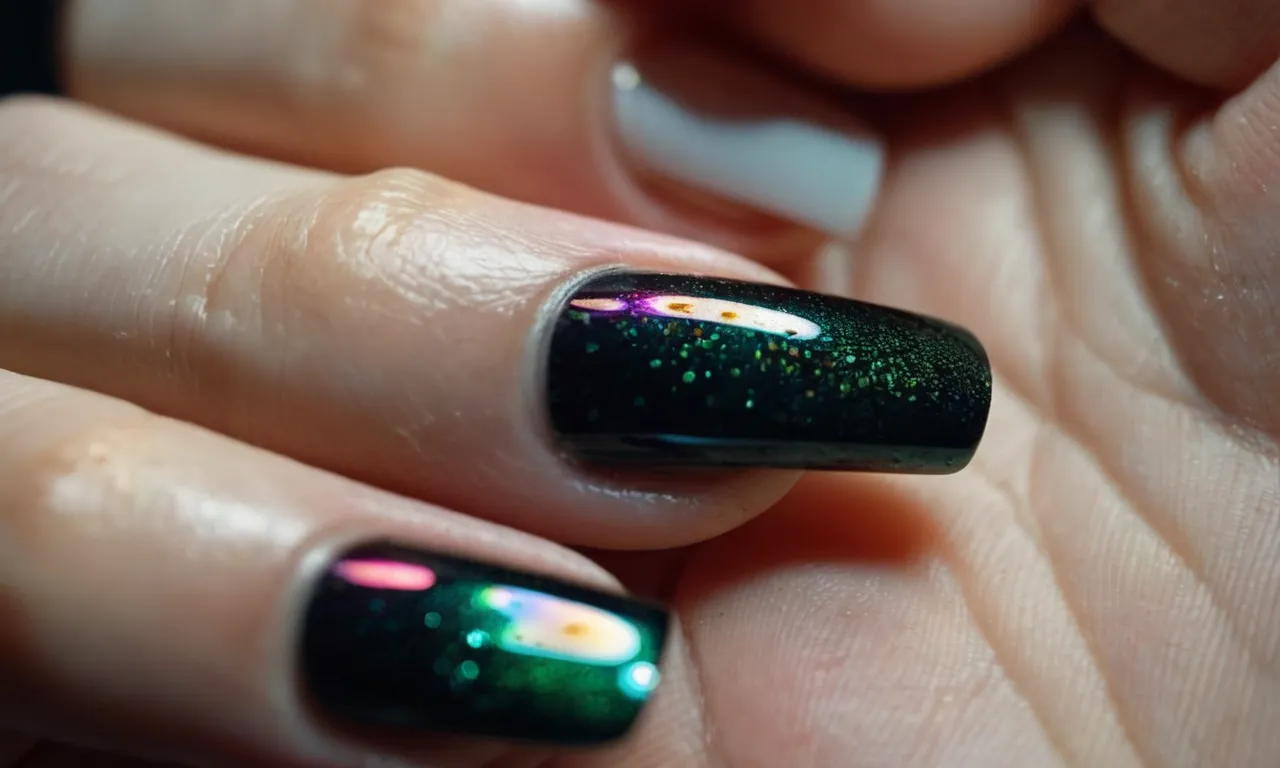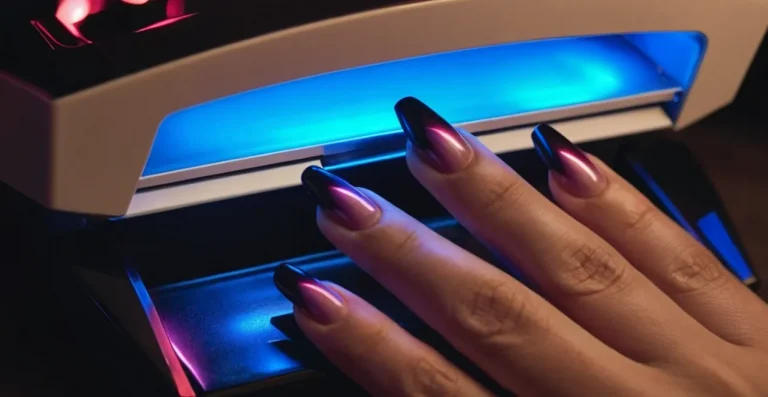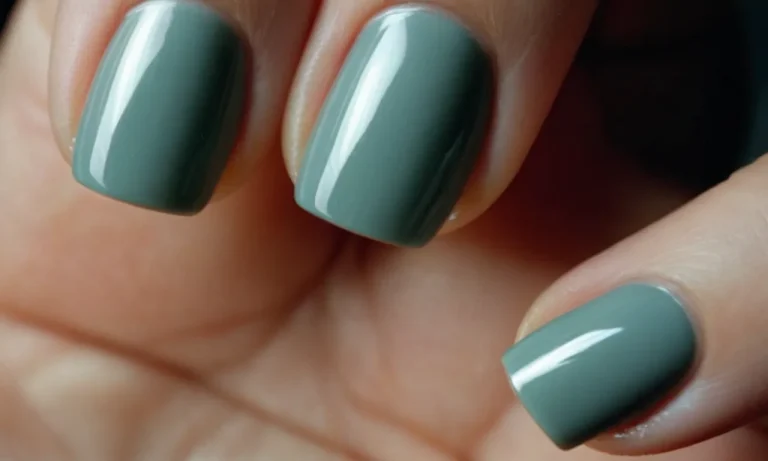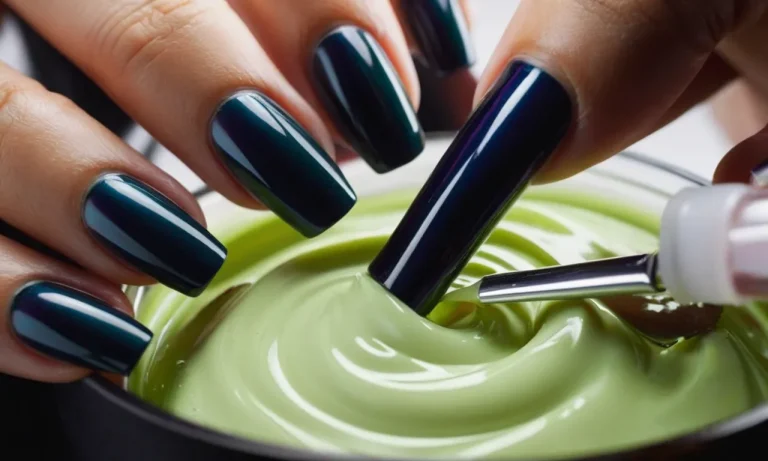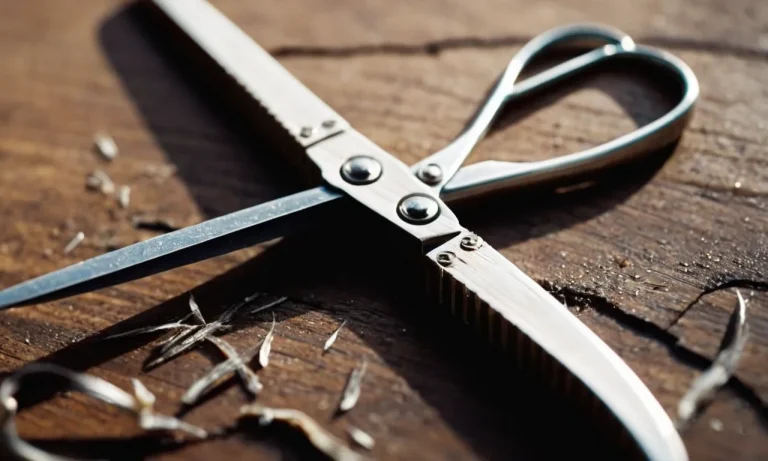Chemical Burns From Nail Polish Remover: Causes, Symptoms, Treatment And Prevention
Nail polish remover can cause painful chemical burns if handled improperly. The active ingredients like acetone, ethyl acetate, and isopropyl alcohol are harsh solvents that can damage the skin and eyes if there is prolonged contact.
If you’ve experienced a chemical burn from using nail polish remover, here are some quick tips: Rinse the affected area with cool running water for 15-20 minutes, avoid using ice or very cold water which can worsen the injury, and see your doctor if the burn is severe with blistering or deep tissue damage.
In this comprehensive guide, we’ll discuss the causes and types of chemical burns from nail polish remover, symptoms to watch for, first aid treatment steps, medical treatment options, and tips to prevent burns when using nail polish remover.
Causes and Types of Chemical Burns from Nail Polish Remover
Common Ingredients that Can Cause Burns
Nail polish removers often contain harsh chemicals like acetone, ethyl acetate, and isopropyl alcohol that can irritate skin and cause burns with prolonged contact (1). These active ingredients break down nail polish, but they also break down proteins and fats in skin, damaging tissue.
Acetone, found in most nail polish removers, is a harsh solvent that dissolves substances. With excessive exposure, acetone causes skin inflammation and burns. Ethyl acetate can also severely irritate skin, while isopropyl alcohol extracts moisture from skin, increasing irritation.
Exposure Risks from Spills and Prolonged Contact
Chemical burns can occur when using cotton balls or pads soaked in remover and held against nails for too long when removing polish. The prolonged exposure irritates skin and causes redness, swelling, blisters, and dead skin cells.
Spilling remover directly on skin also heightens risk for chemical burns. Acetone-based removers can cause second-degree burns when spilled in large amounts and not promptly washed off. Even small spills left untreated can irritate and inflame skin over time.
First, Second, and Third Degree Burns
The severity of chemical burns from nail polish remover depends on factors like: amount of exposure, concentration of chemicals, and area of skin affected.
First degree burns cause minor skin damage, like redness and pain. Second degree burns go deeper, causing blistering of skin. Third degree burns fully destroy skin layers.
While most chemical burns are first or second degree, spilling a remover like acetone can potentially cause third degree burns when left on skin for a prolonged time. Any burn with significant redness, swelling, blistering or dead skin should be seen by a doctor.
Symptoms of Chemical Burns from Nail Polish Remover
Mild Burn Symptoms
Mild chemical burns from nail polish remover may cause minor skin irritation and redness on the fingers, hands or nails. The skin around the affected area may become inflamed, dry, flaky and painful to the touch. Small fluid-filled blisters may also develop on the skin’s surface.
Mild burns are extremely uncomfortable but generally heal within a week with proper first aid and care.
Moderate and Severe Burn Symptoms
More severe chemical burns can cause additional symptoms like:
- Thick, leathery and discolored skin
- Large, fluid-filled blisters
- Extreme pain, swelling and inflammation
- Dead or damaged skin and tissues (necrosis)
- Permanent nail loss or thickened, distorted nails
- Impaired sensation and nerve damage
- Difficulty moving the affected area
The skin may turn white, black, brown or red, with clear borders between burned and healthy skin. The burns may leave scars after healing. Severe burns extend deeper through multiple layers of skin, causing more widespread damage that is slower to heal.
When to Seek Emergency Care
It’s crucial to seek emergency medical care if chemical burns cause:
- Difficulty breathing
- Chest pain
- Changes in consciousness
- Burns covering large parts of the body (>20%)
Emergency personnel can assess the severity, provide pain relief, debride dead tissue, bandage the injury and watch for signs of infection. Skin grafting surgery may be necessary in cases of third-degree burns destroying multiple layers of skin and tissue.
Early intervention can greatly improve long-term function and appearance of the affected area. Call emergency services or get to an ER immediately if you experience any concerning or alarming symptoms after a chemical burn injury. Don’t hesitate – early treatment is key!
First Aid Treatment for Chemical Burns
When nail polish remover causes irritation or burns on the skin, it is vital to administer proper first aid while waiting for or deciding on medical care. The first step is to remove the cause of the burn if it is still contacting the skin by brushing off any soaked-in liquid or soaked materials.
Rinse the chemical thoroughly from the skin using cool running water for at least 15 minutes to stop continued burning. Tepid water is preferable as cold water may cause shock and hot water can make the injury worse.
Immediate Burn Care Steps
After rinsing, cover the wound with a sterile non-adhesive bandage or clean cloth. Do not use fluffy cotton as it may get fibers stuck in the wound. You can apply a mild burn cream if available, but avoid butter or oil-based products that can seal in heat.
To ease pain and reduce damage, elevate burnt limbs higher than the heart. Seek emergency help for large, deep burns or if the victim develops concerning symptoms like severe pain, blisters, redness or paleness beyond the burnt area. Monitor carefully for signs of infection.
When to Call a Doctor After First Aid
It is crucial to get medical attention promptly for chemical burns beyond very minor redness as they can rapidly deteriorate skin and underlying tissue. Call emergency services or go to urgent care or the ER immediately if the burn covers a large surface area, looks deeply damaged with significant blistering or charring, is on delicate facial areas, or is resulting in worrying symptoms.
For less severe irritation with only minor to moderate redness or a limited number of small blisters, schedule a doctor visit as soon as possible for wound evaluation and possible antibiotic or steroid treatments to prevent complications like infections or permanent skin damage.
Medical Treatment for Severe Chemical Burns
Wound Care and Infection Prevention
Severe chemical burns require prompt and comprehensive wound care to prevent complications like infections. The damaged skin needs to be irrigated thoroughly with cool running water for at least 20 minutes to remove all traces of the chemical.
Loose particles of dead skin and blister fluid must be debrided to reveal healthy underlying tissue. The wound should then be covered with a sterile non-stick dressing, which needs to be changed frequently. Topical antibiotics like silver sulfadiazine are applied to prevent bacterial growth.
Painkillers may be administered if required.
Measures must be taken to identify and treat any infection early, like daily inspection and microbial culture tests. Symptoms like fever, redness, swelling, pus, foul odor indicate infection, which is treated with targeted antibiotics.
Anti-tetanus prophylaxis is given if the person’s immunization is not up to date. Nutrition and hydration are maintained to promote healing. The use of negative pressure wound therapy has shown to significantly reduce infections and improve healing in chemical burns.
Pain Management
Chemical burns are extremely painful owing to the inflammation and nerve damage caused by caustic substances. Oral or intravenous pain medications like acetaminophen, ibuprofen or opioids provide relief from mild to moderate pain.
For severe pain, regional anesthetic blocks like brachial plexus blocks can induce localized numbness. Patient controlled analgesia pumps allow self-administration of painkillers within pre-set limits. Adjuvant medications like anticonvulsants and antidepressants also alleviate nerve pain.
Non-pharmacological measures like relaxation techniques, biofeedback and cognitive behavioral therapy helps patients cope with pain.
During wound care procedures like debridement, topical anesthetics, nerve blocks or conscious sedation may be used to reduce pain. Monitoring pain levels using scales helps decide appropriate medications and doses.
Providing psychological support and counselling gives patients a sense of control over their situation. A multi-modal balanced approach is essential for optimum chemical burn pain management.
Skin Grafting for Deep Burns
When chemical burns damage the entire thickness of skin, skin grafting is required after debridement of dead tissue. Autologous skin grafts using healthy skin from the patient’s own body produce the best results.
Split-thickness or full-thickness skin sections are transplanted after surgically anchoring them with sutures, staples or specialized glue. The grafted skin regenerates blood vessels and reconnects with sensory nerves within few days.
Extensive burns may require repeated grafts or temporary biological dressings to slowly achieve complete skin cover.
Cultured epithelial autografts grown from patient skin cells allow coverage of larger burn areas. Allografts from skin banks and biosynthetic skin substitutes are alternatives when donor sites are limited.
Skin grafting aims to achieve permanent defect closure to restore barrier function and appearance. Compressions garments may be worn for a year post-surgery to prevent graft contractures. Physical therapy helps regain flexibility and movement.
With good graft take rates, skin grafting significantly improves clinical outcomes in deep chemical burns.
Tips to Prevent Chemical Burns from Nail Polish Remover
Use Remover Sparingly and Wash Hands
When using nail polish remover, it’s important to use only a small amount at a time. Applying too much can increase the risk of chemical burns if the product comes into contact with the skin for too long.
The Centers for Disease Control and Prevention recommends using a cotton ball, pad, or ball to apply remover so you have better control over the amount used.
Be sure to wash hands thoroughly after using nail polish remover, even if there is no visible contact with the skin. Washing with soap and water helps neutralize and remove any residues that could still cause irritation or burns if left on the skin.
Wear Gloves and Eye Protection
Wearing protective equipment like gloves and eye gear minimizes exposure when using chemical products like nail polish removers. Vinyl or nitrile gloves specifically help create a barrier to protect the skin on the hands.
Safety goggles or glasses should also be worn to prevent accidental splashing or contact with the eyes. Chemical burns can occur on the eye’s surface causing significant irritation and damage if remover gets in the eyes.
Store Remover Safely Out of Reach of Kids
Nail polish remover should always be kept safely out of reach of children, as they are more vulnerable to chemical burns or poisoning if ingested. The American Association of Poison Control Centers reports over 6,000 cases per year of kids under 12 being exposed to nail products.
Storing remover locked up or up high helps prevent accidental exposure.
Remover should also be kept in its original container and never transferred to an unlabeled or alternative container that children may mistake as safe to consume.
Conclusion
Chemical burns from nail polish remover can be extremely painful and cause lasting damage if severe. By understanding the risks, taking proper precautions, and following first aid steps immediately, you can help minimize the harm.
Seek medical treatment for moderate burns or worse, and take steps to prevent accidents when using these chemical solvents on your nails. With vigilance and care, you can continue enjoying beautiful nails safely.

